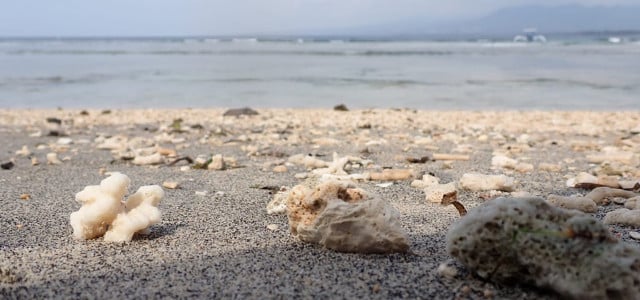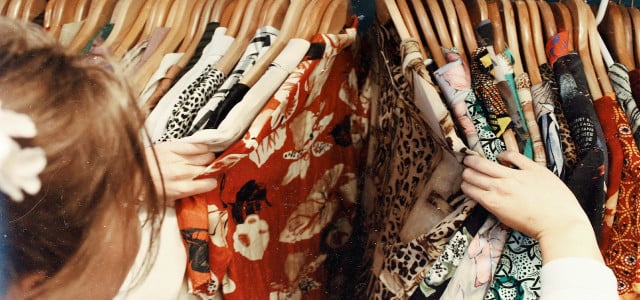Modal fabric is a semi-synthetic fabric that is often used as a cotton substitute. Although it’s sometimes promoted as an eco-friendly manmade material, is it really sustainable?
Synthetic fibers like polyester are notorious for being a major source of microplastics that pollute the ocean and threaten marine life. Semi-synthetic fabrics, which treat organic materials with chemicals in order to strengthen them, are often considered a more sustainable alternative. Modal fabric is one such semi-synthetic material. Some manufacturers also use other names for this material including micromodal fabric, or modal cotton, likely because it is often used as a cotton substitute for clothing items such as T-shirts. While modal is more sustainable than some other fabrics like polyester or conventional cotton, it is far from being the most sustainable fabric out there. Read on to learn more about how to identify the most eco-friendly modal material, where to find it, and how to care for it.
How Is Micromodal Fabric Made, and What Are Its Benefits?



Like similar fabrics such as rayon, modal is made by treating tree cellulose with a chemical process. It is typically made using beechwood, and the finished product is fully biodegradable. While it is more expensive than fabrics like polyester and conventional cotton, it tends to use fewer resources for production, making it a more sustainable fabric than some.
Modal material also has many advantages. It absorbs dyes well, making it resistant to fading over time. It is also resistant to shrinking and is highly water absorbent, making it a good fabric for exercise apparel.
The Drawbacks of Modal Cotton and How to Avoid Them



Despite these benefits, modal fabric still has a substantial environmental impact. As part of the chemical treating process, modal manufacturers use a hazardous chemical called carbon disulfide. According to the EPA, exposure to this chemical can result in many negative health effects, including nausea, headache, delirium, and sometimes even death. Modal material production is therefore potentially dangerous for factory workers, and if toxins leak into the environment, it can also be harmful for local wildlife. In order to avoid these issues, some companies are implementing chemical-trapping processes that prevent these manufacturing byproducts from escaping into the environment.
In addition to these health effects, the wood cellulose used in modal may not be sustainably harvested. Therefore, if you are looking to purchase an item made of modal, it’s important to look into how the wood base was sourced.
Where to Find the Most Sustainable Modal Products



Although modal fabric production has the potential to be harmful to both human health and the environment, specific manufacturers are doing their best to reduce these negative effects. In particular, Lenzing, one of the earliest manufacturers of modal cotton, has developed a more sustainable method of production. Marketed as TENCEL™ Modal, the carbon-neutral manufacturing process uses an environmentally friendly bleach, recovers and reuses many of its resources, and uses ten to twenty times less water than the production of conventional cotton. If you want to buy clothing made out of modal, look for a product that uses TENCEL™ Modal.
While Lenzing itself produces the sustainable fabric, many eco-friendly and ethical brands use it to produce their apparel. For example, Whimsy + Row, an L.A.-based brand that releases limited collections, often uses TENCEL™ fabrics. Tamga Designs is another ethical company based in Canada, which carefully selects sustainable fabrics, including TENCEL™ Modal. By choosing to shop from brands like these, you can ensure that you are purchasing the most environmentally friendly modal items.
How to Care for Modal Clothing
Once you have obtained your eco-friendly modal clothes, another important aspect of their sustainability will rely on how well you care for them. The more you wear and re-wear an item, and the longer you keep it in your wardrobe, the lower the environmental (and monetary) loss over time. In order to make your modal clothes last as long as possible, you should:
- Wash your clothes in cold water. This will prevent any shrinking, and may even reduce wrinkles. If your clothing has been dyed a vibrant or dark colour, cold washing will also reduce fading over time.
- Dry on low heat, or air dry wherever possible. Using the low heat setting on your dryer, or even foregoing a dryer altogether, is one of the best ways to decrease the environmental impact of clothes you already own.
- If you must use bleach, use an oxygen-based one. In contrast to conventional chlorine bleach, oxygen-based bleach is gentler. For more tips on how to prevent discoloration, check out our guide for how to wash white clothes.
If you follow these tips, you can make your modal clothing last for years.
Read more:
- 3 Simple Questions That Will Make You Quit Fast Fashion
- What is Viscose Fabric and Is It Eco-Friendly?
- Econyl: A Look Behind This Recycled Fiber
Do you like this post?









